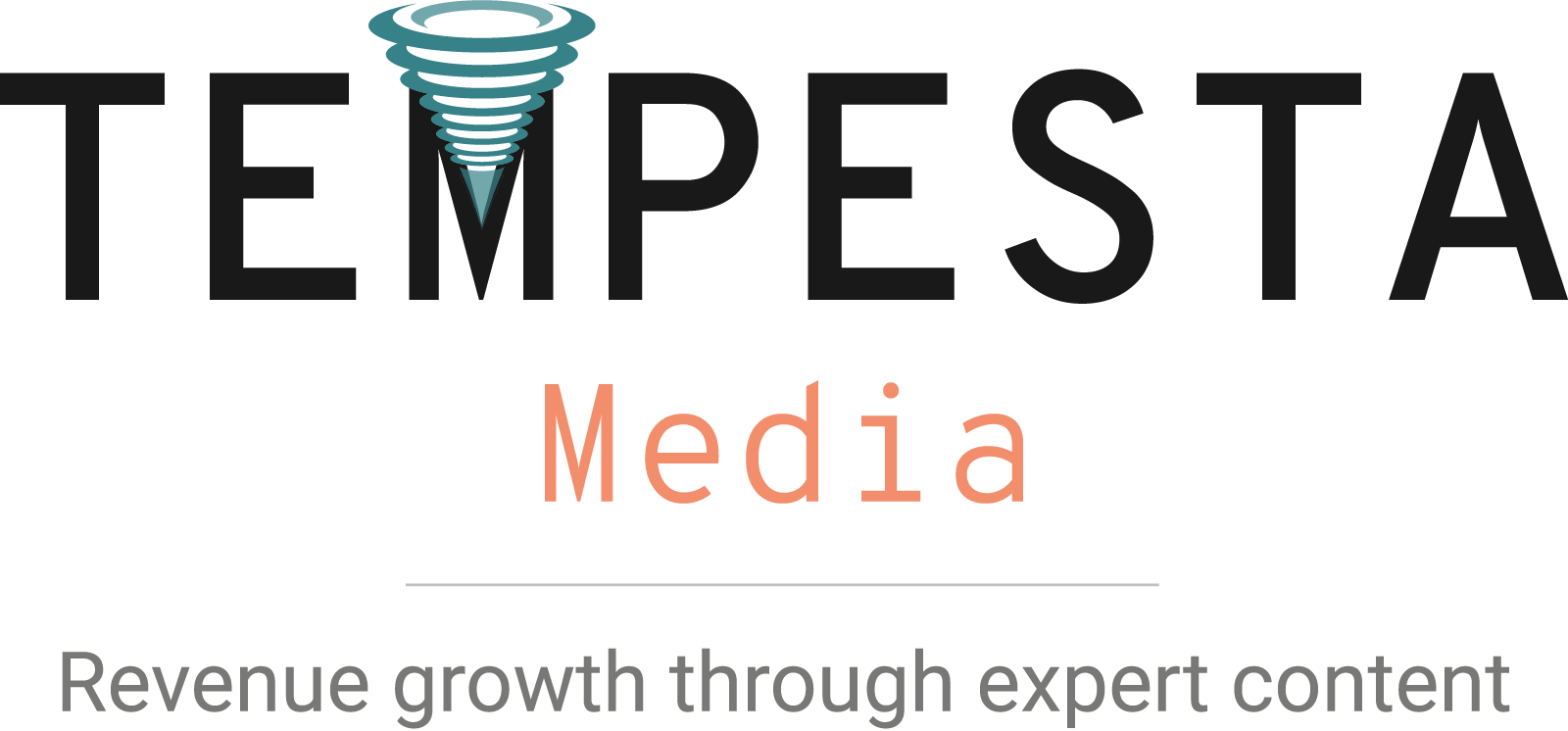Introduction
Economic uncertainty has been a worrisome constant over the past few years, but the latest forecasts are promising and show that recovery isn’t far away.1 Forging a path forward is possible for organizations willing to innovate and focus on result-oriented strategies.
Credit unions and other financial institutions still face several challenges. For many credit unions, investing in effective digital marketing programs is the key to overcoming ongoing challenges and achieving sustainable growth.
In the following guide, we’ll discuss the four pillars of credit union digital marketing, share some finance marketing tips to stand out, and include some credit union marketing ideas that drive results in 2023 and beyond.
What Are the Top Challenges Credit Unions Faced in 2023?
Recent data reveals that most credit unions face the same challenges.
- Tech adoption.
- An aging member base.
- Rising interest rates.
Tech adoption
As early adopters, big banks have a significant advantage in tech adoption. Credit unions have successfully entered the digital era, but as smaller institutions, they typically trail large banks in terms of rolling out the latest digital tools.2
With online banking well into its maturity stage, credit unions also face heightened expectations from new and current members.3

An aging membership base
Connecting with young consumers is one of the top challenges credit unions face because, currently,w the average age of a credit union member is 53.4 Millennials and Gen Zers are the key to sustainable growth, especially in the context of the Great Wealth Transfer.
As their membership base approaches retirement, credit unions must shift and adapt to the changing financial needs of their audience.
Rising interest rates
Higher interest rates are causing consumers to borrow less. However, recent trends also reveal that Americans are saving less than ever. Credit unions are seeing usage rates drop for many major products.
Why Credit Union Digital Marketing Is the Answer
Adopting effective credit union digital marketing strategies can help address the top challenges credit unions face and create a path forward. Here are three reasons why:
- Investing in digital marketing results in a potent digital presence that aligns with the expectations of modern consumers while immediately presenting the credit union as forward-looking and relevant.
- Digital channels can support the changing needs of existing members while creating meaningful connections with new members.
- From sharing personalized product recommendations to enhancing financial literacy, digital marketing campaigns can play an essential role in helping consumers navigate a challenging economic environment while increasing usage rates for key products.
The State of Digital Marketing for Credit Unions
As a whole, the financial industry is moving toward increasingly digital journeys. Credit unions already had a strong digital presence with ads, content marketing, and other strategies, but the COVID pandemic saw the widespread rise of digital services.
The most innovative credit unions now offer digital application platforms for products like home or auto loans. These digital services rely on a sound digital ecosystem with multiple elements, such as a back-office tech stack, integrated data security, and a user-friendly interface.
In this context, digital marketing acts as a funnel that creates effective touchpoints to connect existing and potential members to these digital onboarding experiences.
However, building a digital ecosystem that consistently drives conversions is complex. It requires a strategic approach, and achieving digital transformation on this scale calls for a significant investment of time and resources.
Credit unions are also facing heightened competition from other financial institutions. With 2023 characterized by shrinking profit margins, many of these institutions are reacting by increasing their marketing spending, creating an even more competitive environment.5
Big banks already have an advantage in the digital space, and this trend will only accelerate as large institutions become the first to deploy AI solutions.
Summary:
- Many credit unions increased their spending on digital marketing and digital platforms during COVID.
- Prominent banks still retain a significant advantage in building online journeys.
- This gap will widen as well-known banks prepare to increase digital marketing spending and invest in AI.
Actionable insights:
- Credit unions can meet members’ expectations by developing end-to-end tech stacks for a safe and convenient experience.
- Beating big banks on their home turf isn’t realistic. However, credit unions can differentiate themselves by focusing on what makes them unique.
The financial sector could save $200 to $340 billion each year thanks to generative AI.6

Credit Union Marketing Ideas for Visibility and Lead Generation
Credit unions need to forge a path to future growth by actively growing their membership. Achieving visibility in search results and generating leads are vital goals for member acquisition.
Credit Union Visibility in Search Results
Visibility in search results primarily happens by combining search engine optimization (SEO) with content marketing. Achieving synergy between these two components leads to content appearing in relevant searches and driving qualified traffic.
Credit unions can get better results by focusing on these SEO strategies:
- On average, credit unions have 4.5 locations.7 This local model calls for local optimization strategies to connect with users within the organization’s service area.
- Understanding search intent. Understanding tasks along the member’s journey and identifying common questions and concerns through keyword research can inform content marketing strategies and uncover new topics to cover.
- Search is changing. Between conversational searches driven by AI and voice assistants or Google featuring media-rich results, credit unions can benefit from optimizing for multiple search result formats.
Visibility Beyond SEO
Search engine optimization isn’t the only area of focus for achieving visibility and connecting with users.
Use Paid Ads
Paid ads can help bridge the gaps in an SEO strategy, increase awareness, and divert attention from other financial institutions with a strong presence in search results.
Most financial organizations increase paid ad budgets as paid media prices rise.8 Competing with these higher levels of spending might not be realistic for credit unions, but a strategic approach can still yield results:
- Try scaling back on paid ads to prioritize high-conversion campaigns and making local ads a top priority.
- Social ads can help grow a younger membership base because 72% of Gen Zers say they are receptive to ads on social media.9
- Retargeting campaigns are no longer an option due to the death of the third-party cookie. Instead, ads based on search terms and context can help target users with a high likelihood of converting.
Add Social Proof
Social proof or word-of-mouth marketing is a strong driver of growth that doesn’t cost anything. Engaging with members in digital spaces, encouraging them to leave reviews, and promoting user-generated content (UGC) can go a long way in building social proof.

From Visibility to Lead Generation
As the digital environment becomes increasingly competitive, focusing on digital marketing efforts remains a viable way to connect with users and generate leads.
With the right funnel in place, users are more likely to form a meaningful connection with your organization and become members.
You can increase the likelihood of conversion by creating initial touchpoints that result in a strong connection and help users progress in their search for the right financial products.
The following strategies support lead generation:
- When targeting a keyword to achieve visibility in search results, it’s crucial to understand the search intent and task behind this keyword. The content on the landing page must address the search intent and suggest a logical next step.
- Mapping the typical member’s journey can help develop content and visibility at every stage of this journey. These repeat touchpoints will build awareness, recognition, and trust.
- Audience targeting is crucial. Optimizing content based on location and search intent can help funnel traffic from users more likely to join the credit union.
Summary:
- Credit unions can improve visibility in search results by connecting SEO and content marketing.
- Visibility goes beyond SEO and encompasses paid ads and social proof.
- Visibility itself isn’t sufficient. Touchpoints need to be strategic and directly support conversions.
Actionable insights:
- Credit unions can increase marketing ROI by focusing on valuable searches with a high chance of conversion.
- Well-known banks are spending more on ads. Building strategies around location and intent can help credit unions achieve visibility in this competitive environment.
- Credit unions must adapt to search trends by developing conversational content and exploring new formats.
Over 25% of searches conducted on Google are no-click searches.10
Credit Unions Effectively Cater to Multiple Customer Needs
Adapting to changing behaviors and values is crucial for staying relevant. When looking at recent trends in consumers’ behaviors and preferences, a clear picture emerges:
- For 78% of consumers, a sustainable lifestyle is important.11
- More than 30% of consumers think brands should take a stand on social issues.12
- While chatbots are a convenient option, 58% of consumers feel comfortable talking to a human for customer service, compared to 19% for a chatbot.13
These data points reveal a desire for sound environmental and community options. People are also craving human connections.
Because of their model, credit unions are uniquely positioned to address all these needs, which is something major financial institutions often struggle to achieve.
The challenge lies in adopting communication strategies that effectively connect the offerings of a credit union with the things consumers care about. This is where a comprehensive digital marketing strategy helps.
What is the credit union differentiator strategy?
In terms of credit union marketing ROI, the differentiator is a powerful argument that can directly influence financial decisions by helping consumers pick a financial institution that shares their values.
Communicating your human, environmental, and social values should be at the heart of your digital marketing efforts. This message directly speaks to the desire for connection and community that resonates with all age groups, including young consumers who can grow your membership base.
In a competitive environment where big banks spend millions on marketing, these strong values create a sense of authenticity and make your content marketing efforts memorable and impactful.

How to communicate the credit union differentiator
Develop digital marketing campaigns that make you stand out and generate meaningful connections with these differentiation strategies.
- Be authentic.
- Tell a story.
- Encourage user-generated content.
- Get help from your employees.
Be authentic
Own what makes you unique through content that feels genuine and authentic. You can empathize with members’ needs, use channels that resonate with them, and adopt a sincere and honest tone. Developing a detailed voice profile can help you find your credit union’s true voice.
Tell a story
Telling stories engages the audience and results in memorable connections. Stories also generate emotions and strengthen the relationship you have with existing members.
As a credit union, you can tell stories that hit home. For instance, your content can highlight how you support local businesses or invest in the community. Don’t hesitate to experiment with blogs, videos, and other formats.
Encourage user-generated content
UGC shines a spotlight on your members and community. This type of content is highly relatable, and seeing another person experience and solve a similar pain point with one of your products can be a notable and pivotal moment for a prospective member.
You can foster UGC through social media campaigns, but you can also feature testimonials on your site or create video interviews featuring credit union members.
Get help from your employees.
Your employees can deliver unparalleled value by developing unique digital content. An employee advocacy program will establish incentives and guidelines for creating and sharing content that gives users a unique look behind the scenes while humanizing your organization.
Summary:
- Because of their model, credit unions are in a unique position to differentiate themselves by communicating about their human and environmental values.
- A strong content marketing program that focuses on authenticity, storytelling, and UGC can connect your values to what consumers care about most.

Actionable insights:
- If you don’t have a strong branding strategy, now is the perfect time to think about your core values and review your mission statement.
- Ask yourself what makes your credit union unique and how it creates value for the community.
- Shine a light on your community through UGC and employee advocacy. Engage your audience by telling meaningful stories about how your credit union is making a difference.
79% of marketers plan on prioritizing brand storytelling in the near future.14
Building Financial Literacy With Digital Marketing
Financial challenges can vary from one consumer group to another, but the current uncertain economic conditions are creating issues shared by a majority of people:
- 70% of Americans say they are experiencing financial stress.15
- Lending from credit unions was down by 29% in Q1 2023 compared to a year ago. Payday loans are the only lending product category that is experiencing growth.16
- Americans save less than ever, with an average savings rate of 4.6%. It’s almost half of the 8.9% average for the decade.17
- It’s no secret that many are behind on their retirement savings, and several factors make it challenging to catch up.18
Providing Value Through Financial Literacy
As a credit union, you can provide value by helping current and prospective members navigate this challenging situation. Making financial literacy one of the pillars of your digital marketing content strategy has several advantages:
- Delivering valuable advice will help establish your credit union as a trusted source of information.
- A community with a high rate of financial literacy is a community that can achieve financial wellness, which directly supports your mission as a credit union.
- Financial literacy increases confidence and helps current and prospective members pick a product and feel good about their choice.
- Over the years, financial literacy helps adopt a proactive attitude to managing one’s finances and makes members look into additional products more actively.
Credit Union Marketing Ideas for Financial Literacy
Explaining key concepts like borrowing, building credit, saving, and investing is valuable, but further research can reveal unique pain points your audience may need help with so you can create content around these topics.
Financial literacy content can take many formats:
- Blogging. A short blog post is a great way to introduce a concept or answer a question. It’s an opportunity to apply conversational SEO techniques and improve visibility in search.
- Pillar pages. Pillar pages can be comprehensive financial guides focusing on goals or life stages. As the guide discusses different concepts, you can encourage content consumption by linking to other financial literacy resources.
- Content series. Content series can create continuous engagement through bite-sized content that discusses essential financial topics. Formats can include video series, weekly social media posts, emails, or podcasts.
- Interactive content. Foster engagement and deliver a memorable experience with interactive content. Calculators and other financial tools can create value for your audience, but you can also offer an interactive experience through Q&A sessions or live videos.
- Youth-focused content. Parents want to raise children with sound financial literacy skills, and preparing the next generation to make sound financial decisions will support financial wellness in your community.

From Financial to Product Literacy
Financial literacy content aims to educate your audience, but it doesn’t mean it should be entirely separate from the content you create to generate leads.
In fact, financial literacy content delivers an organic experience that naturally leads the user to consider new financial products. Improving financial literacy also increases confidence and encourages users to take a proactive approach to managing their finances.
Once a user knows more about a financial concept, you can introduce specific solutions and deliver the knowledge they need to compare different products and make a decision. This transition from financial to product literacy empowers members to make the right decisions while enhancing conversions and marketing ROI.
Summary:
- There is a strong demand for financial literacy content that is relevant and accessible.
- Financial literacy content can take many forms, from blog posts to podcasts or videos.
- Developing financial literacy can directly support lead generation by incorporating product literacy into these efforts.
Actionable insights:
- While there are general financial topics you can discuss, your financial literacy marketing campaign will feel more impactful if you identify specific challenges your target audience is facing.
- Develop a content marketing strategy to consistently publish educational content that empowers your audience to make better decisions, and remember to make this content easy to find through optimization and structured resource repositories.
- Build touchpoints into your financial literacy content to help users discover relevant products and services.
15% of adults say their lack of financial literacy has cost them $10,000 or more.19

The Importance of Personalization in Credit Union Marketing
Personalization is traditionally a priority that shapes the in-person branch experience. Now, members expect the same level of personalization when interacting with digital platforms.20 Today, personalization is another competitive area where credit unions can outdo the advanced strategies distinguished banks have rolled out.
Offering a highly relevant personalization experience makes existing and prospective members feel valued. It also helps them save time by immediately making the most pertinent resources accessible. It can improve the outcome of their financial journey by recommending the best products for their needs.
Credit unions as trusted advisors
Credit unions should rethink their value proposition and emphasize their role as trusted advisors. In this context, members can feel more comfortable sharing information and actively engaging with touchpoints, resulting in personalized recommendations. They will also become more likely to trust these recommendations.
How can personalization and analytics help?
Investing in analytics programs can result in a better understanding of a credit union’s target audience. Data-driven insights support segmentation and make developing content and experiences that feel highly relevant to different member personas easier.
Are there other digital touchpoints specific to credit unions?
Branches create organic touchpoints, but credit unions can enhance personalization by incorporating additional digital touchpoints into the member’s journey.
Your online banking platform, email, or social media can act as channels for distributing personalized content. Integrating digital content recommendations into the branch experience will take your personalization strategy to the next level.
Should credit unions use chatbots?
In 2022, 37% of consumers interacted with a bank’s chatbot.21 With the rise of AI, chatbots will become an increasingly important channel for consumers looking for a convenient, 24/7 interactive experience.
Chatbots have some limitations and should ideally provide users with touchpoints connecting them to a human representative when needed. But they can also recommend financial literacy and other digital resources based on user questions.

How are credit unions addressing privacy?
Credit unions must find the right balance between privacy and personalization to deliver an optimal experience. A few ideas are:
- Focusing on zero-party data (information shared by users voluntarily) to create a personalized experience while giving users control over what they share.22
- Personalizing content based on context, seasonal trends, and other factors. Leveraging analytics to create member personas and segments can also help recommend content and experiences based on what members with a similar profile engage with.
- Adopting a strong data governance policy. You can use digital marketing to communicate about this policy and build trust.
Summary:
- Members expect a highly personalized experience when visiting a branch or engaging with online content.
- Applying finance marketing tips like developing an analytics program, rolling out chatbots, and creating new touchpoints to collect information and distribute content will make a difference.
- Privacy is an ongoing concern, and balancing privacy and personalization is essential.
Actionable insights:
- Credit unions can get more out of their personalization efforts by establishing themselves as a trusted advisor.
- Investing in analytics and AI-powered chatbots are crucial strategies for delivering the right content at the right time.
- Trust and transparency are essential, so credit unions must develop sound data governance practices.
71% of consumers consider a personalized banking experience as important.23
Summary
Consumers live in a period characterized by economic uncertainty, and a majority are experiencing financial stress. Credit unions can play an essential role, but they must first overcome a few challenges, including increased competition from prominent banks, developing a relevant model for a younger audience, and modernizing their approach to digital banking.
A content marketing strategy that relies on these four pillars can address these challenges and put credit unions in a position to serve members who need guidance through these times of economic uncertainty using:
- Visibility. Combining sound SEO and content marketing strategies is the key to connecting with the right users as they set out on their financial journey.
- The credit union differentiator. Direct competition with big banks isn’t realistic, but credit unions can stand out and offer unique value by providing a sense of community and human connection.
- Financial literacy. There is a strong need for financial literacy content. Credit unions can help their community thrive while empowering prospective members to make the right financial decisions.
- Personalization. Delivering a personalized experience makes members feel valued, but it also improves financial outcomes by connecting them to the right resources and products for their needs.

Tempesta Media’s Marketing Solutions for Credit Unions
Tempesta Media is a managed services provider helping credit unions develop effective digital marketing campaigns through our proprietary Bullseye Effect™ solution.
Our mission is to help you achieve visibility thanks to a consistent publication schedule. Our team of vetted AI-augmented experts can produce quality content at scale to compete with larger financial institutions and their in-house teams.
We’ll also assign a dedicated account manager to assess your unique needs and goals to develop a relevant digital marketing strategy. Whether you need to emphasize your differentiators, develop financial literacy content, or create highly personalized content for different audience segments, your account manager will oversee your campaigns and apply proven strategies that drive results.
Beyond content development and publishing, Tempesta Media delivers a comprehensive analytics platform to help you track results and improve visibility over how your marketing spending creates value.
Learn more about our Bullseye Effect™ solution or schedule an assessment to get started!
Sources:
- An Update to the Economic Outlook: 2023 to 2025 | Congressional Budget Office
- 4 strategic trends to watch | CUNA News
- Digital Banking Transformation Trends for 2023
- How Credit Unions Can Grow Membership Amidst Liquidity Challenges | Upstart | NSC Blog | NAFCU
- Banking Trends to Watch for H2 2023 – Insider Intelligence Trends, Forecasts & Statistics
- Generative AI could save banks billions – The Banker
- Credit Union Branches Increase in 2022
- How to Stretch Your 2023 Marketing Budget as Media Prices Rise
- 5 charts on what marketers should know about the 2023 customer—from media habits to search behavior
- Google search study: 25.6% of desktop, 17.3% of mobile are zero-click
- Do consumers care about sustainability & ESG claims? | McKinsey
- U.S. consumers on brands addressing social issues 2022-2023 | Statista
- The Top 10 Global Consumer Trends for 2023 | NACS
- New Report Reveals The 4 Ingredients Of Effective Brand Storytelling In 2023 | The Drum
- 70% of Americans feel financially stressed, new CNBC survey finds
- Quarterly Credit Union Data Summary 2023 Q1
- Americans are saving far less than normal in 2023. Here’s why
- Here’s how much money Americans in their 50s have in their 401(k)s
- Here’s how much people say lack of financial literacy cost in 2022
- Consumers Expect Personalization at Every Banking Touchpoint
- Chatbots in consumer finance
- Data Strategies for Personalization, Privacy & Compliance in a Cookieless Future
- Banking’s Data Privacy Paradox: Create a Win-Win Value Proposition










